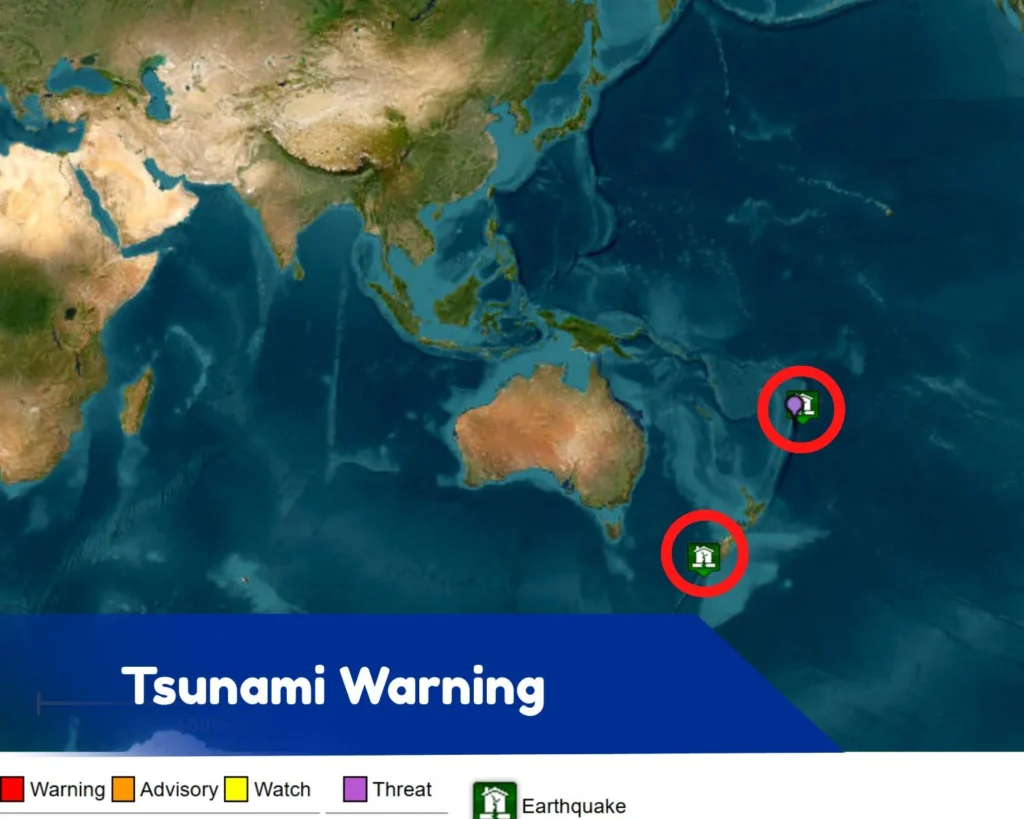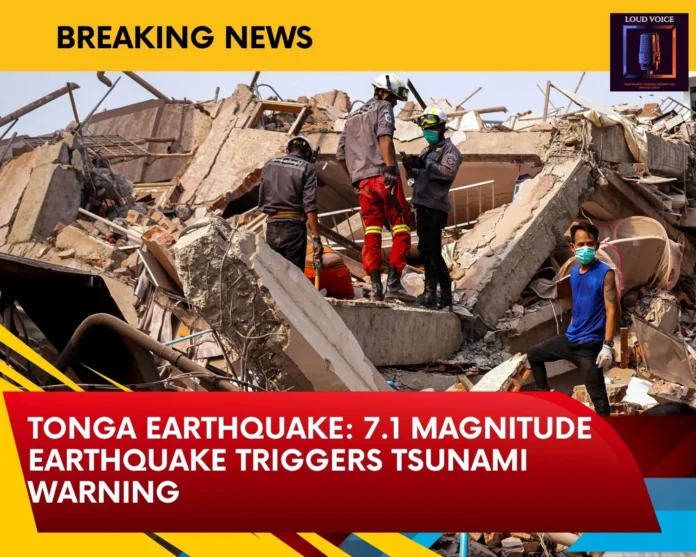Tonga Earthquake: Introduction
A 7.1-magnitude earthquake struck near Tonga in the South Pacific, prompting authorities to issue an initial tsunami warning before later lifting it. The U.S. Geological Survey (USGS) reported that the quake occurred approximately 100 kilometers northeast of Tonga’s main island in the early hours of Monday local time. The tremor, described as shallow but powerful, caused immediate concerns among seismic experts due to its potential for generating hazardous waves.
Tsunami Warning and Evacuations
Following the tremor, the Pacific Tsunami Warning Center (PTWC) issued an alert stating that hazardous waves could impact coastal areas within a 300-kilometer radius of the epicenter. Sirens were activated, urging residents to evacuate to higher ground as a precautionary measure. Reports indicate that inhabitants of the Ha’apai island group followed evacuation protocols calmly.
Many coastal communities in Tonga have designated evacuation sites due to the country’s history of tsunamis. Schools, churches, and community centers in elevated locations often serve as shelters during such emergencies. Witnesses reported that families gathered in these safe zones, waiting anxiously for further updates from local officials.
Later, the PTWC reassessed the situation, announcing that the tsunami threat had passed. However, officials advised mariners to stay in deeper waters as a safety measure against possible residual wave activity. Given the unpredictable nature of aftershocks, authorities maintained a heightened state of vigilance for several hours after the initial tremor.

Impact and Further Seismic Activity
While no immediate damage was reported, authorities continued to monitor the situation closely. Tonga, an archipelago with 171 islands and a population exceeding 100,000 people, is located within the Pacific Ring of Fire, a region known for frequent seismic activity. This earthquake follows previous seismic events in the region, underscoring the ongoing geological instability of the area.
Adding to concerns, a second earthquake, measured at 6.1 magnitude, struck the same area later in the day. While this aftershock did not prompt another tsunami warning, experts cautioned that further tremors remain a possibility. Seismologists explained that aftershocks of varying intensities can continue for days or even weeks following a major earthquake.
Geologists believe the latest quake resulted from tectonic activity along the Tonga Trench, one of the world’s most active subduction zones. The region has experienced multiple significant earthquakes in recent years, some of which have triggered destructive tsunamis.
Residents Urged to Stay Alert
Local authorities have advised residents to stay informed through official channels and remain prepared for potential aftershocks. The event serves as a reminder of Tonga’s vulnerability to seismic hazards and the importance of disaster preparedness in the region. Government agencies are reinforcing emergency protocols and encouraging residents to ensure they have emergency supplies, evacuation plans, and communication strategies in place.
Emergency response teams have been mobilized to assess potential structural damage, particularly in older buildings and coastal infrastructure. While no casualties have been reported, experts stress the need for continuous monitoring as further seismic activity remains possible. Residents in high-risk areas have been urged to exercise caution near unstable cliffs and coastal zones that could be susceptible to landslides or sudden sea-level changes.
For updates on safety measures, residents are encouraged to follow announcements from Tonga Meteorological Services, the National Emergency Management Office (NEMO), and other relevant agencies. Authorities have also called for an international review of seismic warning systems to enhance preparedness for future events.


